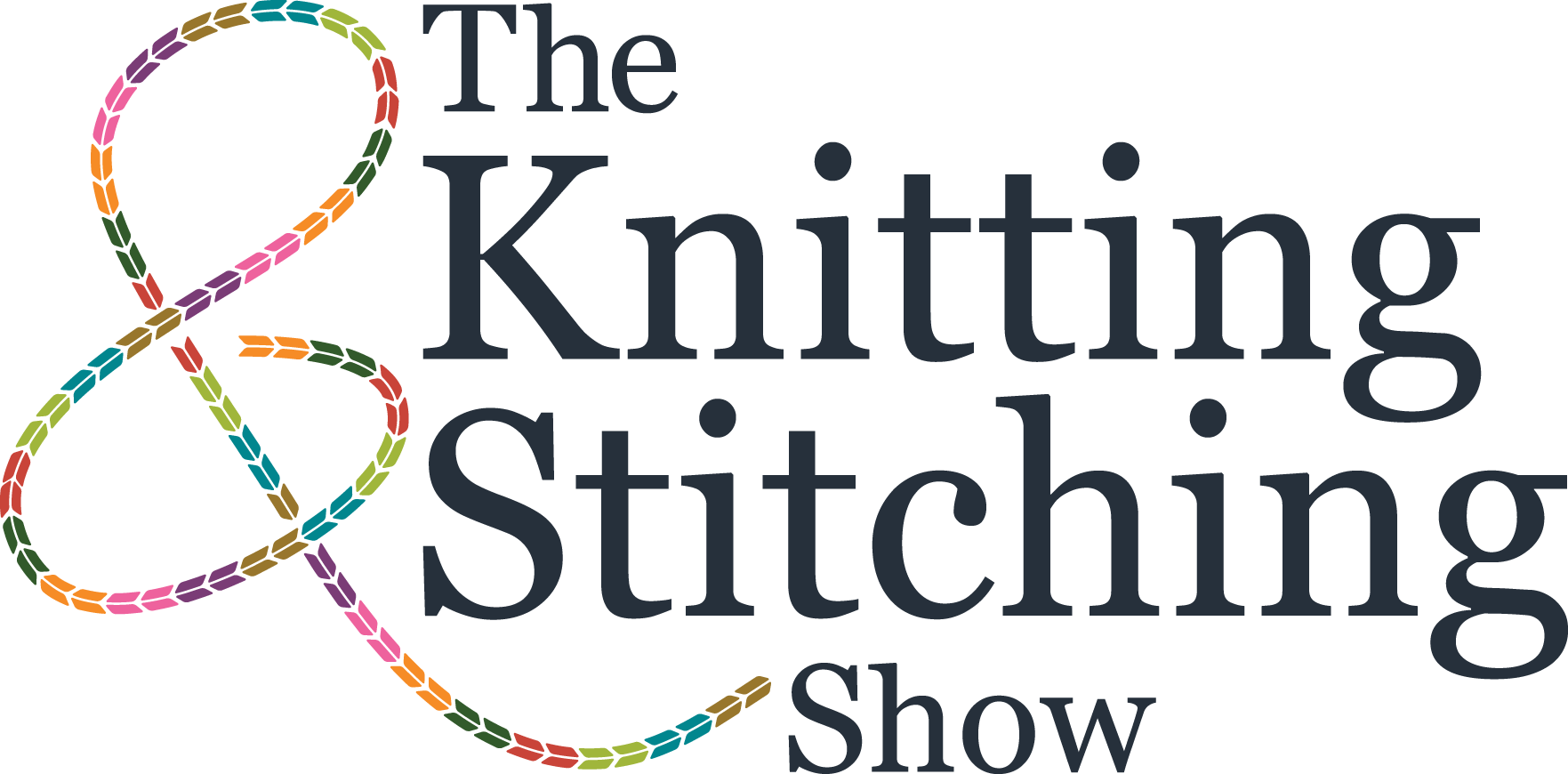Hannah Lamb is a Yorkshire-based mixed media textile artist. Her exhibition, Home/Work, is at The Knitting & Stitching Show at Harrogate Convention Centre from 18th-21st November 2021.
Hi Hannah, we’re really looking forward to seeing Home/Work, your forthcoming exhibition for The Knitting & Stitching Shows this autumn. The collections contemplate the role of home and work in our lives, and feature work made before, during and after the COVID-19 lockdowns. Can you tell us a little more about the appeal of home and work as inspiration for your art?
Since the beginning of the pandemic in 2020, all of our lives have been turned upside down. For me, the boundaries between home and work became blurred as my teaching role moved online. The stresses and messiness of my personal and professional lives became entangled, changing the way I felt about home and testing my relationships. On a more positive note, during 2020 I was able to have a wonderful studio built at home. I was able to watch the work progress from my window, whilst working online – daydreaming about a space of my own while doodling little house shapes in my notebook. Multiple lockdowns in our area have made me feel immensely fortunate to have a safe, comfortable home, supportive friends and now a ‘room of my own’ in which to be creative.
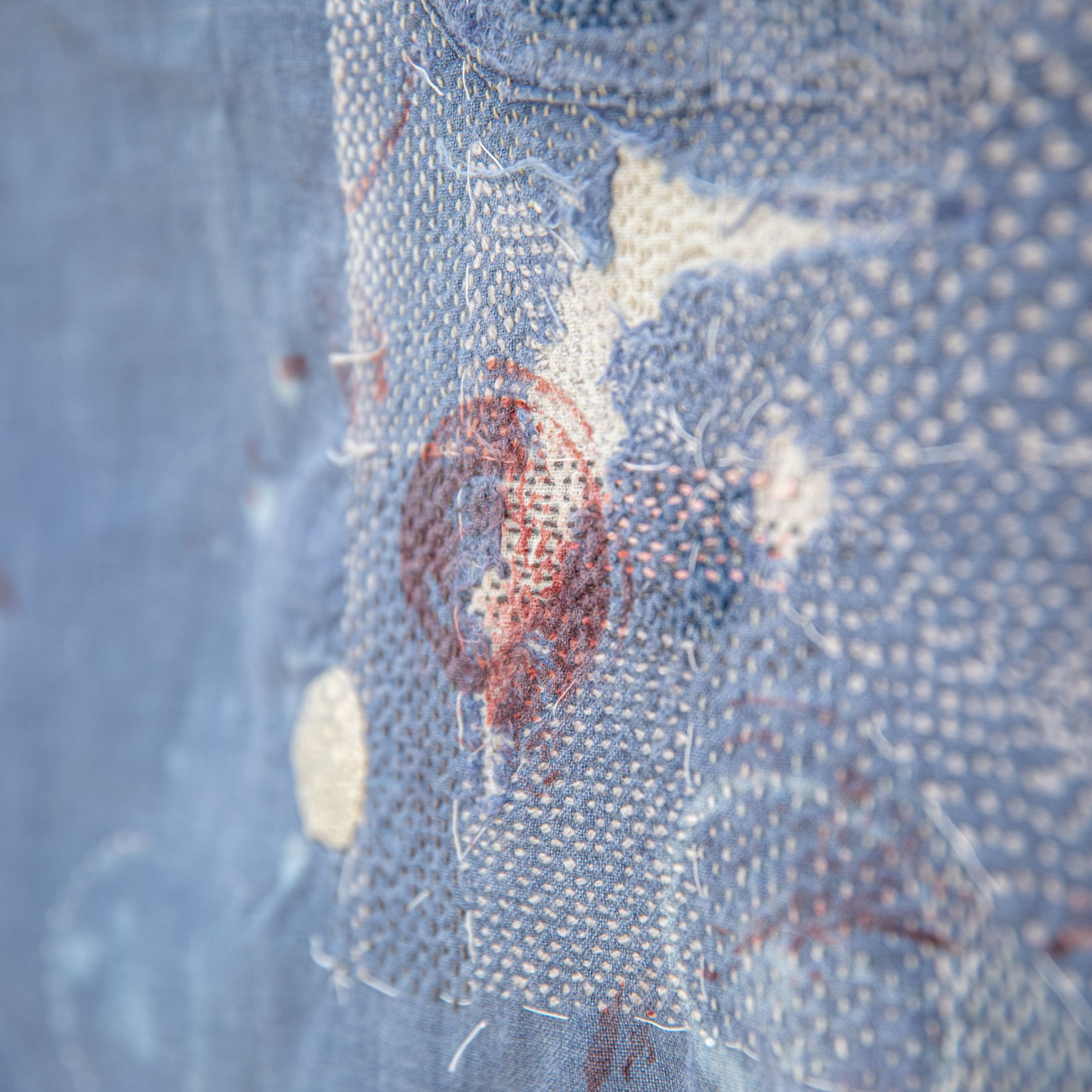
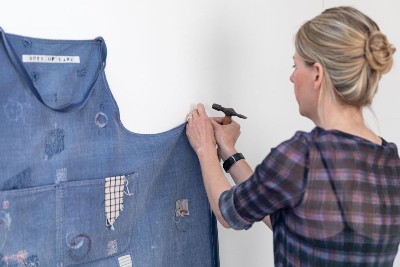
Has making work during the pandemic been cathartic?
During the early part of the pandemic, I found my creativity had largely deserted me and it was almost impossible to make serious artwork. I felt envious of those who had a huge burst of creative energy during lockdown. Eventually I came to accept that creativity would come when I was good and ready. I began enjoying the simplicity of working with small pieces of materials; patching, piecing and hand stitching. I chose fabrics that felt good in my hands, things that were softened by age. The tactile sensation of working with materials, slowing down and zoning out, was helpful when I felt stressed. Some of these little textile fragments have been incorporated into the collages, prints and house assemblages created for the exhibition.
You are deeply fascinated by the structure and surface of cloth and have described cloth as “poetic, with an ability to describe what is difficult to put into words”. Can you tell us what you mean by that and what the work in your Home/Work exhibition has to say?
In my book Poetic Cloth (Batsford, 2019) I describe the relationship I have with textiles as an artist. For me, it is both my creative media and my muse. Cloth is ever present in our lives, from cradle to grave. That close relationship allows us to convey meaning through a common language of tactility, texture and movement.
My work for Home/Work isn’t intended to be obviously hard-hitting, but there are deeply emotional and personal ideas behind some of the pieces. I have worked with contrasting materials and effects; vintage chintz and softly quilted materials suggest a romantic vision of domesticity; while blackened, torn and bound materials represent turmoil and change. I frequently work with layers of different techniques and materials to create a sense of time and subtle variations of surface. I generally don’t have my work all planned out beforehand but instead allow elements to come together, building things up and joining pieces.
My hope for the work in this exhibition is that while some pieces are dynamic and impactful in the space, other smaller pieces will give people a chance to focus and slow down, creating space for personal reflection
You live, make work, and write from your home in Bingley, West Yorkshire, teaching too at Bradford School of Art. What role do you think Yorkshire’s rich textile heritage has played in the development of your passion for cloth and textile art?
Having moved to the Bradford area 17 years ago, I feel incredibly lucky to be living in a place steeped in a rich culture and heritage of textiles. Textile is everywhere; in the landscape, buildings, places and language. I have had the chance to visit local textile manufacturers, endlessly transfixed by the transformation from fibre to fabric. I love to see the mix of historic mill buildings and modern manufacturing. The relationship between textile heritage and contemporary arts spaces creates wonderful opportunities for artists in the area; Salts Mill and Sunny Bank Mills have both provided inspiration and spaces to exhibit. Local museums and archive collections have also been hugely influential in my work. In the Bradford College Textile Archive, beautiful patterns and fascinating recipe books include items of importance to local industry and highlight their global connections. For me, the seemingly quiet spaces of archives and redundant mills hum with a quiet energy of creative potential.
Your work features a wide range of textile processes, like stitch, print and fabric manipulation, and ranges from large-scale installations to small-scale studies. Is there a technique or process that you’re like to explore in future work?
I love learning new processes and it can become quite addictive so I try not to just learn new things for the sake of it. In my work I try to focus on choosing the best combination of methods and materials to convey my ideas. Having said that, I’d love to have the time to develop my skills with natural dyeing and printing. This is such a huge area of study you could spend a lifetime learning – if only I had more time!
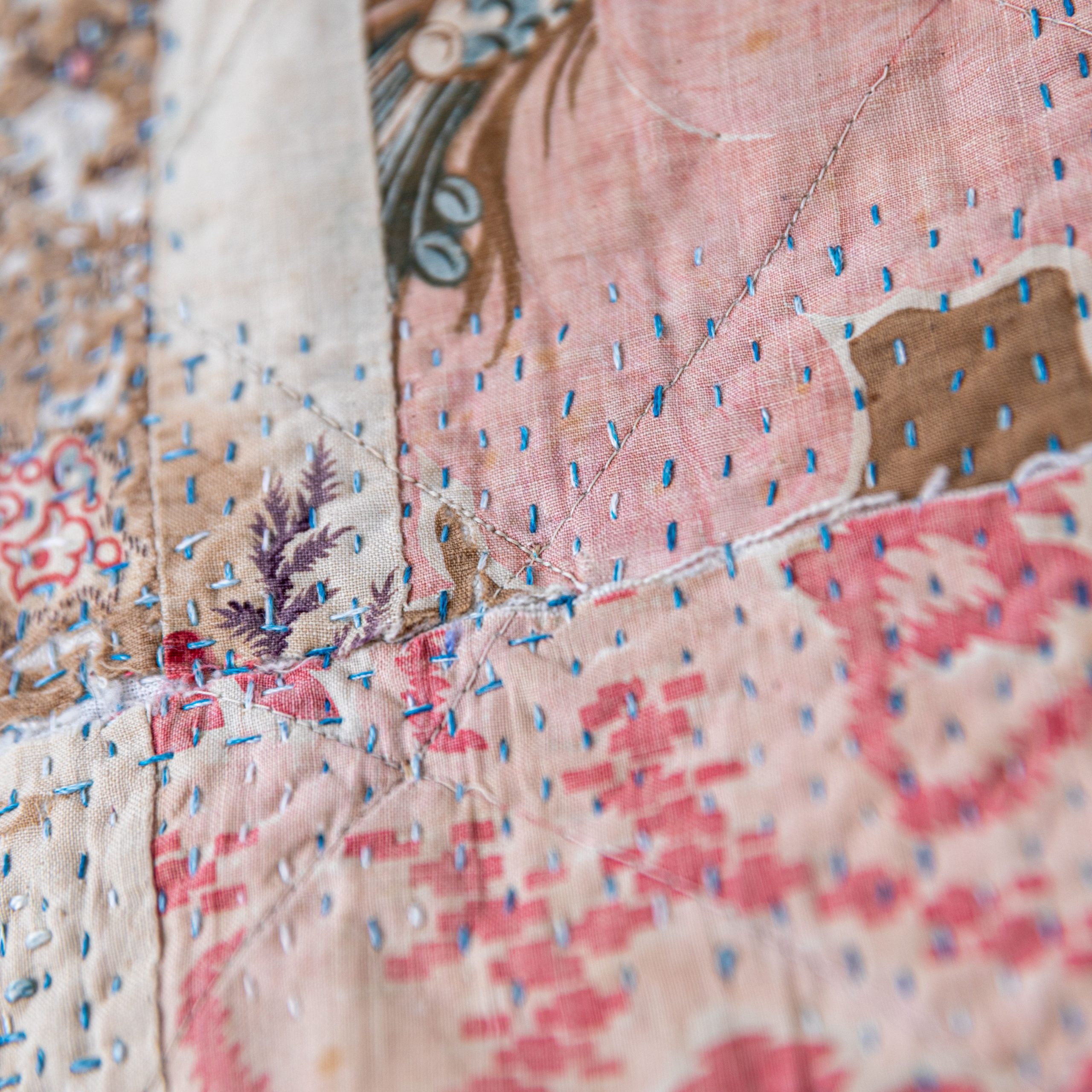
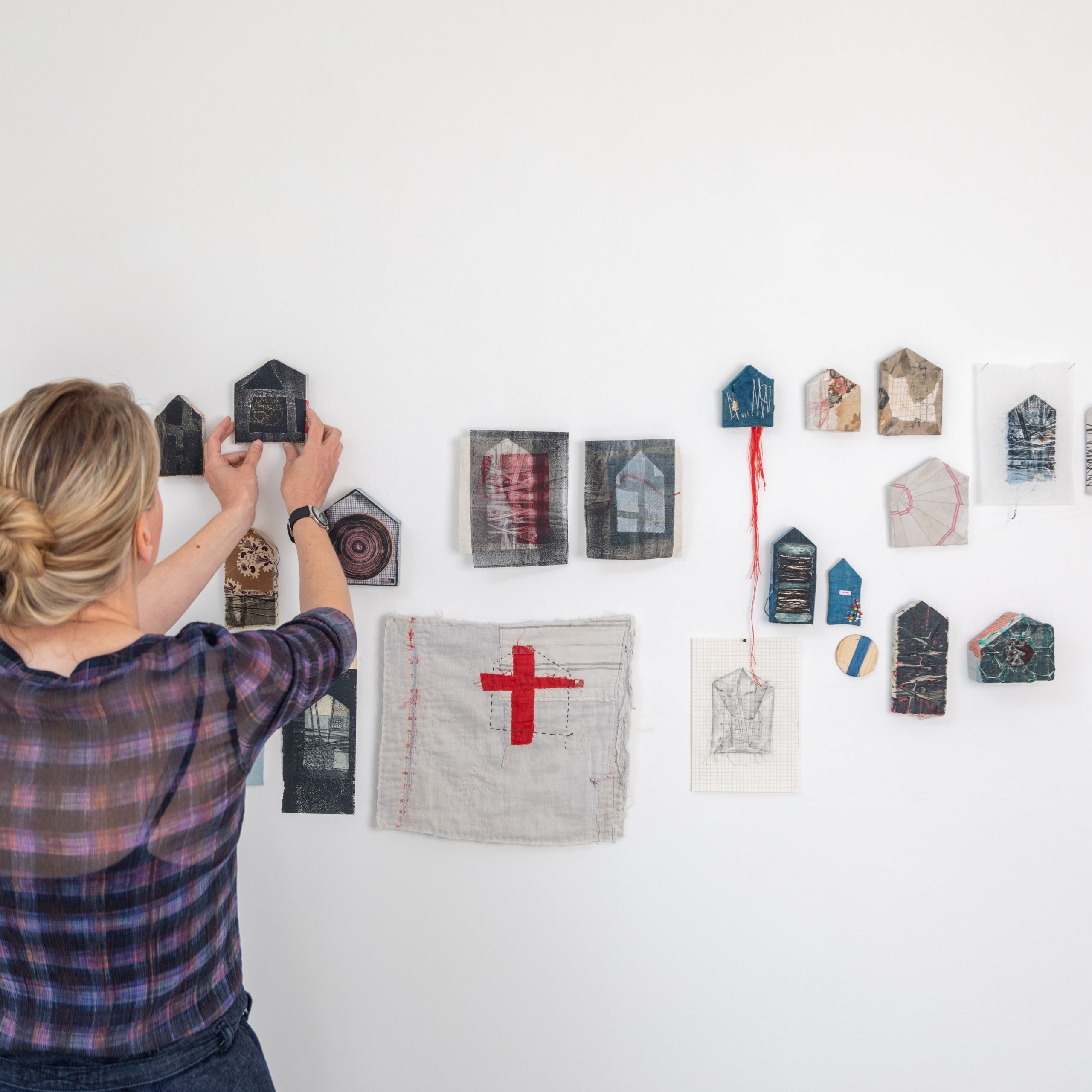
You’re a member of the acclaimed 62 Group of Textile Artists which aims to challenge the boundaries of textile practice. How do you feel that your own work contributes to this ambition and which boundaries would you like to break?
Becoming a member of the 62 Group was a huge honour. I know the group is hugely respected and so there is a weight of expectation. In some ways it is hard to be pushing the boundaries of textile practice today; there is so much openness to what textile art can be. I do sometimes worry that the textile art world is too cosy and not self-critical enough but one of the things I like about being in the 62 Group is the rigorous selection process, which means if members don’t have work selected for three exhibitions in a row they are out of the group. This pushes me to make the best work I can, continually questioning my practice and its context. Recent work created for our ‘Connected Cloth’ exhibition as part of the British Textile Biennial, has encouraged me to consider the global context of textile manufacture. I wanted to learn about the colonial and post-colonial context of British textiles. For me it’s important to be constantly learning, questioning and challenging myself.
To see more work from Hannah Lamb, click below.
